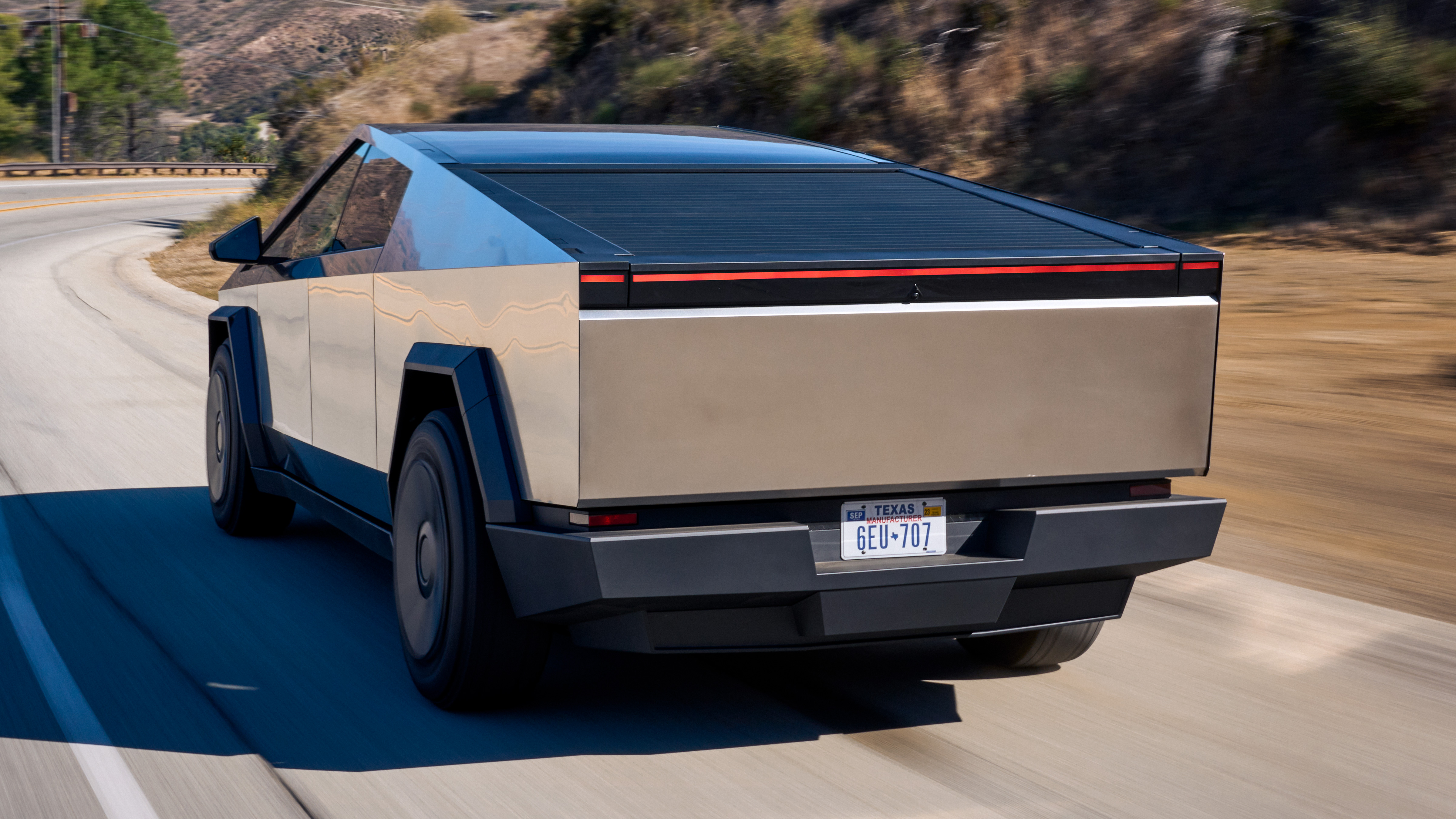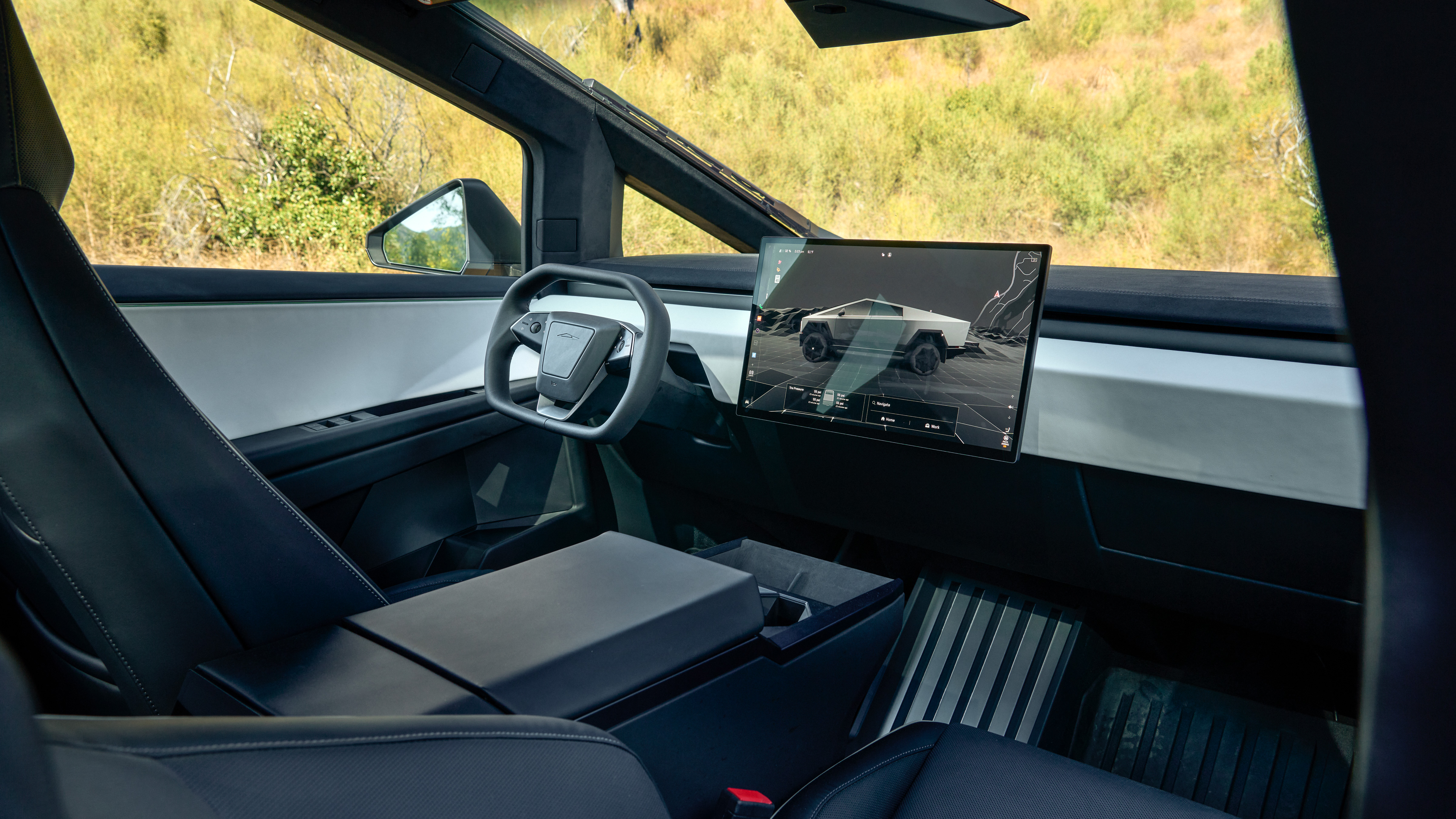
Tesla Cybertruck review
Driving
What is it like to drive?
First, you need to understand how enormous it is. At just under 5.7m long it’s shorter than the Ford F-150 lightning (it was scaled down a bit fairly late in the day at Elon’s request, apparently, to save cost, material and boost performance - the engineers must have loved that), but at over six feet long and over four feet wide, it has a bigger bed. From where we’re sitting though, weaving through LA traffic, it doesn’t feel particularly petite. Even in America where everything is supersized, it’s an absolute tank.
Tricky to drive around town I presume?
Nope. You glide through urban areas with all that torque masking mass, in a serene bubble... until another Camry driver swerves in front of you to get the perfect angle for their TikTok video, a periodic reminder of just how bonkers the thing you're driving looks from the outside. There's a blind spot behind the chunky A-pillar and zero rear visibility with the tonneau cover in place (instead you get a rear-view camera feed at the top of the screen, ironically it has proper wing mirrors as cameras aren't yet legal in the US) but we never have any difficulty placing it on the road or parking up.
The hardest part, not being a regular Tesla driver, is trying not to crash as we prod wildly at the 18.5-inch central screen, trying to recall where everything is. Yep, the Cybertruck does away with an instrument panel and buttons are NFI - all that stretches beyond the squircle steering wheel is several acres of dashboard and a windscreen finishing somewhere past the front axle. The ride on the self-levelling air suspension is cushioning, the wind noise well suppressed and the shudder, rattle and roll we’re expecting to feel when we hit a pothole doesn't materialise. So far, so car-like.
How does it steer?
Forget the wheel that can't decide whether it's a circle or a yoke (jobs for the facelift: the former would be infinitely easier to use), the big story is steer-by-wire meaning there's no physical connection between the squircle and the front tyres... or the rears for that matter as there's also four-wheel steering. So the turning circle is less than a Model S (feels miraculous, endlessly handy) and the wheel only needs 170 degrees in either direction lock to lock, which is less than a full turn in total. The idea is that you never need to take your hands off the wheel, and a constantly variable ratio means you can turn sharply with little effort at low speeds and carve about smoothly when you're going quicker. Unfortunately, the effect around town is a rack that feels livelier than an 80s banker on a Friday night.
Twitch your wrists and the nose darts away, and then with the rear tyres turning up to ten degrees in the opposite direction, the sensation is the truck rotating about its centre point. We get the thought process: remove wheel-twirling entirely, make it feel pointy and precise at low speeds, everything that traditional trucks are not, but the caffeine dose needs rethinking. It's something we learned to put up with, but couldn't gel with even after a couple of days. Tesla's response? Over the air updates: there'll be one state of steering tune at launch, but the mapping can be tweaked infinitely in the future, nothing is set in stone. We shall see.
What about when you go a bit faster?
Find a few curves up in the hills and with some speed under the wheels the steering ratio knocks back from manic to manageable. Now you start to carve out some proper speed, revel in most un-truck-like stability and significantly less body roll than the Hummer EV and F-150 Lighting, the other two battery-laden pick-ups we’ve tried. Look, it’s not a sports car, but it puts traditional trucks in the shade. As ever, the key here is smooth inputs and respecting the laws of physics, otherwise understeer awaits - on road at least, the engineers insist that mucho controllable oversteer can be served up when you find a loose surface.
We don't doubt it, because it is obscenely rapid for something this large. A step up from both Hummer and F-150 Lightning, especially when you select 'Beast' driving mode, stamp on the brake and the throttle at the same time, feel the front squat and the rear raise, hypnotise yourself with the 'Cheetah Mode' graphics on the screen then release the brake to unleash an avalanche of acceleration. Does a pick-up truck need to be this fast? Of course it doesn’t, but drag racing has always been Tesla’s party trick. Why stop now?
Featured

Trending this week
- Car Review
BMW iX3





